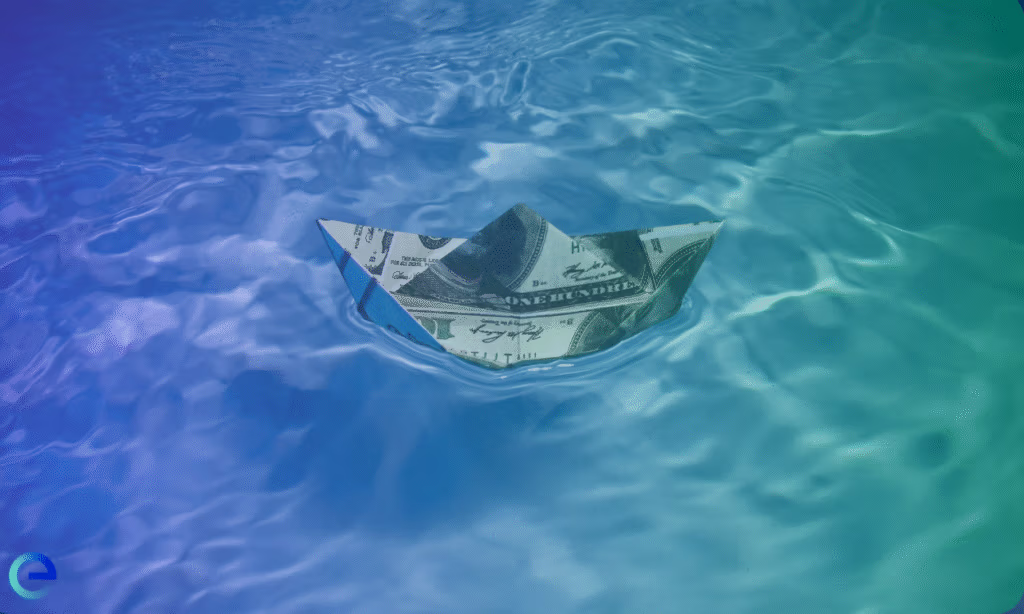

The blue economy represents sustainable ocean resource usage that drives economic growth and creates jobs while protecting ocean ecosystems. This concept took shape around 2012 as an ocean-based counterpart to the “green economy.” Small Island Developing States led this initiative by creating development strategies that matched their natural environment.
People widely use the term in policy discussions, yet it lacks a single agreed-upon definition. The World Bank emphasizes sustainability through environmental, economic, and social aspects. The European Commission takes a broader view and defines it as “all economic activities related to oceans, seas, and coasts.” The Commonwealth of Nations sees it as “an emerging concept that encourages better stewardship of our ocean or ‘blue’ resources.”
Different stakeholders interpret the blue economy in various ways:
The concept has grown significantly since its origins. Traditional marine sectors like shipbuilding, fishing, and ports have expanded to include blue carbon sequestration, marine biotechnology, and offshore renewable energy. Conservation International notes that the blue economy “also includes economic benefits that may not be marketed, such as carbon storage, coastal protection, cultural values, and biodiversity.”
Furthermore, the blue economy connects directly to the United Nations Sustainable Development Goals, particularly SDG 14 (“Life Below Water”), which aims to conserve and sustainably use oceans, seas, and marine resources. Progress toward these goals has been limited, with an additional investment of USD 8–11 billion required to achieve the objective of creating marine protected areas that cover 30% of the ocean by 2030.
Notably, the blue economy stands apart from “ocean economy” and “blue growth.” Ocean economy refers to all commercial benefits from ocean-related activities, whatever their sustainability. Blue growth frameworks want to expand the ocean economy with some ecological guidelines but focus mainly on economic growth. In contrast, the blue economy places more emphasis on fair processes and benefits while protecting ecosystem health.
The blue economy’s economic impact cannot be ignored. According to the OECD (Organization for Economic Co-operation and Development), it is expected that the global blue economy will grow faster than the general economy by 2030.
The Sustainable Blue Economy Finance Principles launched in 2018 provide financial institutions with their first global framework for ocean-related investments. These principles help implement SDG 14 and create ocean-specific standards that make sustainability central to maritime industries.
The blue economy concept supports ocean sustainability by decoupling economic growth from environmental degradation. This creates a system where economic activities benefit the ocean instead of extracting resources from it.
Blue economy survival depends on environmentally responsible fishing. Preserving viable fish populations ensures long-term economic stability. This consistency is important because seafood consumption rises 3% a year. The blue economy approach addresses the misuse of resources, especially illegal and unreported fishing, which hinders the sustainable growth of Africa’s fisheries. Aquaculture is another blue economy sector that protects wild fish. Africa contributes the least to aquaculture production. However, the continent’s sector expands faster than anyplace else and employs 8% of the 12.3 million African fisheries workers. In addition, the High Seas Treaty aims to designate 30% of oceans as MPAs by 2030 to prevent overexploitation.
Marine renewable energy is key to blue economy ocean sustainability. The value of offshore wind energy alone should exceed $3 trillion by 2030. Africa can harness energy from the Indian and Atlantic Oceans to power itself. Estimated capacity is 3,500 TWh/yr Wave Energy.
Environmentally friendly technologies are promoted by the blue economy. The European Union’s Blue Growth Agenda prioritizes low-impact technology and social interactions for environmental responsibility. Marine renewable energy technologies tackle power challenges because they’re renewable, close to demand, and compatible with other energy sources.
The blue economy goes beyond energy. It encourages ecologically friendly maritime transportation by reducing greenhouse gas emissions with cleaner technologies. Route optimization, cleaner fuels, and slower speeds enable ships to be greener. This method transforms entire systems to balance economic growth and environmental conservation.
The blue economy encompasses various sectors that harness ocean resources sustainably. These sectors create economic value while preserving marine ecosystems through innovative approaches and technologies that balance commercial interests with environmental protection.
Sustainable fisheries ensure long-term economic stability by maintaining fish populations. Small-scale businesses employ 80% of the 600 million fisheries and aquaculture employees worldwide. Aquatic animal feeds offer 20% of animal protein to 3.2 billion people. Aquaculture is the fastest-growing food sector, supplying 58% of world fish. But fish stocks are still under pressure: 58% are fully fished, and one-third are overfished. Better than fishing quotas, Marine Protected Areas restore fish stocks and biodiversity.
Coastal and marine tourism accounts for 40% of the maritime economy. This sector earned USD 134 billion yearly and made up over 25% of GDP in at least seven small island developing states before the COVID-19 pandemic. Coral reef tourism supports 70 million trips yearly, producing USD 36 billion annually, with USD 19 billion from “on-reef” activities and USD 16 billion from “reef-adjacent” tourism. Importantly, over 70 countries and territories have “million-dollar reefs” that generate over USD 1 million per square kilometer in tourism revenue. Tourism can improve ecosystems when managed sustainably through marine spatial planning.
The blue economy relies on offshore wind energy, which is also growing. By 2023, the EU had 18.9 GW of offshore wind capacity in 11 nations, up 2.1 GW from 2022. The EU plans to deploy 111 GW by 2030 and 317 GW by 2050. Floating wind technology continues to advance with 29 MW of active operating projects and projected expansion.
Marine conservation services deliver key ecological functions that support economic activities. These services range from carbon sequestration to coastal protection, waste disposal, and biodiversity maintenance. Marine Protected Areas yield economic returns at least six times higher than their implementation cost while preserving biodiversity. Public and private sectors form strategic collaborations to address infrastructure and capacity challenges that support blue industry sustainability.
The blue economy faces major hurdles that need coordinated action from stakeholders in multiple sectors. These challenges include governance issues, funding problems, and striking a balance between economic growth and protecting the environment.
The blue economy struggles with unclear regulations and scattered management approaches. The absence of common, agreed-upon goals creates confusion about whether we should focus on economic growth or inclusive development. 95% of the sea remains unexplored, and these knowledge gaps cannot inform wise decisions. Ocean management systems work in isolation instead of coming together as one integrated system. Different sectors clash over limited resources and competing interests, and we also see tension between tourism and offshore oil extraction. Due to the scattered policy landscape, stable regulations have not been enforced to attract investors and promote eco-friendly practices.
Finances severely impede blue economy development worldwide. Ocean sustainability received only USD 13 billion between 2012 and 2022, despite the blue economy’s expected rise. This financing gap disproportionately affects Sustainable Development Goal 14 (Life Below Water), the least financed SDG. Over the next 15 years, existing ocean management methods could endanger USD 8.4 trillion of investor wealth, according to research. Even though they operate in all blue sectors, SMEs, which account for 90% of many regions’ economies and employ 70% of their workforces, lack direct financing. Investors are also wary of long-term nature projects due to rising interest rates.
Finding the sweet spot between economic growth and environmental protection remains challenging. Reconciling economic ambitions with environmental protection presents an ongoing challenge. Analysis of USD 5.9 billion allocated to blue economy initiatives from 2017 to 2021 revealed investment concentration primarily in business development and offshore wind in Europe and Central Asia. The blue economy requires a perfect balance among social, economic, and environmental dimensions. Essential sectors like sustainable fisheries and marine conservation remain notably underfunded despite their importance for ocean health and food security. Climate-related threats—including global warming, ocean acidification, harmful algal blooms, and coral bleaching—further complicate sustainable management efforts.
The blue economy requires practical approaches and proven methods in multiple areas. These practices establish frameworks for sustainable ocean utilization through collaborative governance models, scientific foundations, strategic partnerships, and robust oversight mechanisms.
Good blue economy governance requires diverse decision-making. For government- and society-wide fragmentation solutions, teams must coordinate across sectors. For instance, Fiji’s National Ocean Policy established a body above all agencies to coordinate decisions. With 18 heads of state, the High-Level Panel for a Sustainable Ocean Economy created integrated ocean management frameworks, Sustainable Ocean Plans. Plan with local and traditional knowledge from the outset. Due to its underutilization, blue economy governance should promote social equality.
Sustainable blue economy growth requires informed approaches. The EU Blue Economy Observatory provides complete scientific data to influence policy decisions. Marine Spatial Planning is a critical governance tool based on data and analytics for assessment, institutional and policy reforms, and innovative finance. Eastern Caribbean governments have invested heavily in blue economy decision-making platforms. AI, data management, and research infrastructure aid sustainable ocean management.
Public-private collaboration improves ocean sustainability. The World Economic Forum’s Ocean Action Agenda prioritizes people and accelerates collaborations. These teams use shared management agreements to build Marine Protected Area businesses. The Regional Conservation Partnership Program protects maritime habitats by uniting stakeholders. Successful partnerships choose lead organizations and create straightforward data collection and sharing methods.
Frameworks for monitoring blue economy implementation ensure accountability. Environmental, social, and financial KPIs need continuous monitoring. Monitoring programs compare ecological health to baselines. The Ocean Panel reports annual advances in country commitments—54 percent accomplished and 40 percent in progress. These frameworks enable projects to respond to environmental changes and scientific discoveries.
Understanding sustainability and ESG doesn’t have to be complex—or overwhelming. At EcoSkills, we simplify every concept with clear, actionable insights and hands-on guidance. Whether you’re exploring the basics or aiming for an industry-recognized certification, our step-by-step resources make it easy to learn, apply, and demonstrate your skills.
